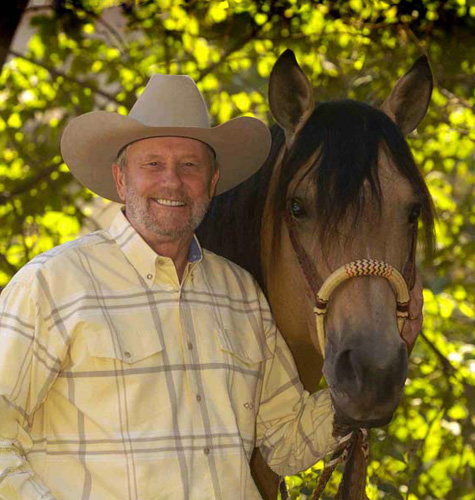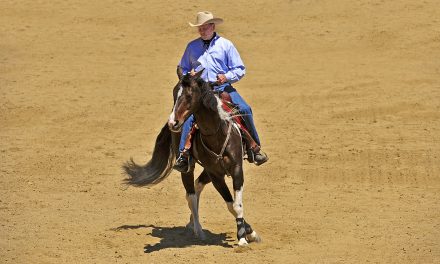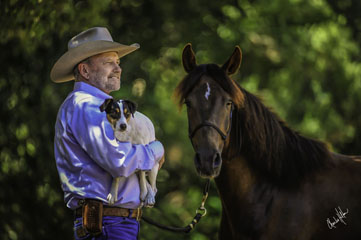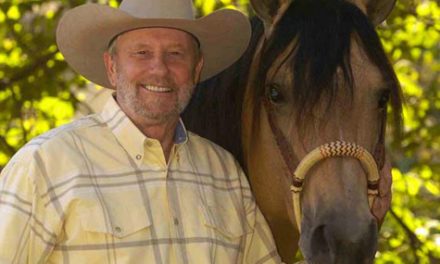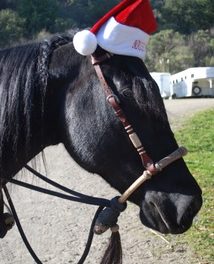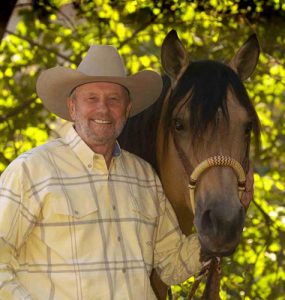 Many times I have seen horses rushing the jumps. Riders try to regulate the speed through a series of half-halts but when this doesn’t work, many end up putting on a tie down or using a stronger bit. All that can be eliminated if you teach your horse to listen to the rein aids and seat aids and to understand what you are asking for with the half-halt cues.
Many times I have seen horses rushing the jumps. Riders try to regulate the speed through a series of half-halts but when this doesn’t work, many end up putting on a tie down or using a stronger bit. All that can be eliminated if you teach your horse to listen to the rein aids and seat aids and to understand what you are asking for with the half-halt cues.
Be consistent in asking for the half-halt, using equal pressure with both hands. A good halt is needed as well as an understanding of the half-halt. Many English horses do not have a good halt. I want my horse to halt and be respectful to my hands. If the horse stops but pulls or pulls on my hands, he is not listening to the cues and is still thinking forward. I correct this by backing the horse off using the rein aids. At the walk, trot and canter, the horse should be able to halt without pulling on my hands.
By doing some flat work, counter canter work, some turns on the forehand at the walk, trot and then canter, we can teach the horse to listen to the rein, leg and seat aids and halt properly without pulling on our hands. It is also good to practice up and down transitions. If your horse’s head is up in the air with every transition, he is not listening to the aids, and certainly not to your hands.
Any time a horse pulls on your hands, the horse is on the forehand and this causes the horse to be rushing in the forward movement. We want forward movement but we want it with rhythm and cadence. We want the horse to be balanced but a horse is not balanced when the head is up in the air and it is on the forehand.
I have worked with many hunter/jumpers and seen that jumping can become a mental game when the horse gets into a routine and begins to anticipate. It helps to break up that routine. Some of my little jumpers here at the ranch and the super horses that do some jumping, jump too high because they are rushing the approach. There are two things I have the riders do that are very successful in dealing with this.
If I feel the horse start to rush as we approach the jump or cavaletti, I circle the horse, spiral down, maybe move a hip over, and then ask again. I will not take the jump until the horse is relaxed. The second thing I do when the horse is rushing the approach to a jump is pull the horse down to a halt. When we try the jump again, it is easier to change the stride for a half-halt because the horse is starting to think it may be doing something other than going over the jump.
One other way to deal with rushing the jumps is to lunge your horse over them first. Sometimes, particularly with a green horse, by the time you teach it to lunge over the jumps it will understand and be more relaxed and quiet going over the jumps.
So many times on the local level the horses are jumping high as if they were going over 4 foot fences when the poles are only set at 24 inches. Controlling the stride at the approach will help the horse to start considering the jump, and help the rider control the scope of the jump. This will result in the horse picking up his legs and being more graceful and prettier going over the fence. Don’t be afraid to stop your horse or make him circle back around when he is rushing and pulling on your hands. Don’t tolerate it. You are the one in control and the horse must listen to you.

